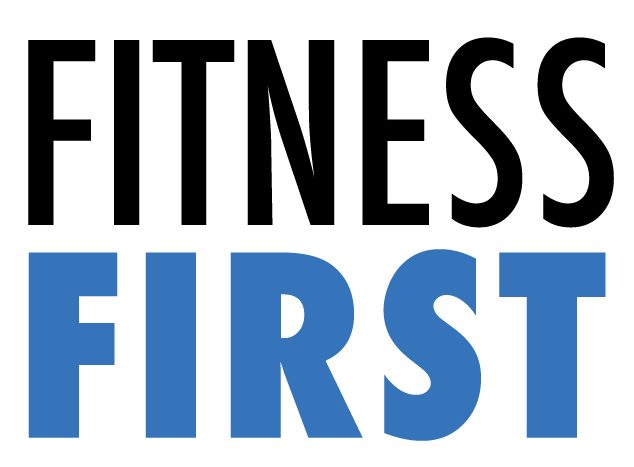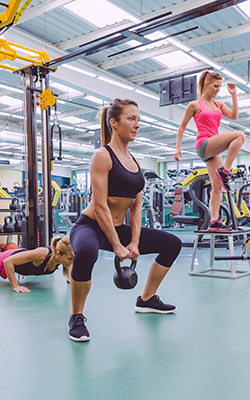
What’s the best kind of exercise program for getting in shape? There are lots of different possible answers to this question.
If you want to build muscle mass, traditional, muscle-specific training is the best option. If you want to improve cardio-vascular fitness, you need to put in time on the treadmill or bike.
But if you want to establish good, overall fitness that will improve your everyday quality of life, then maybe you should consider a Functional Movement exercise program.
What is Functional Movement Exercise?
Functional Movement exercises focus on the kind of biomechanical movements that reflect the movements we make every day. In most cases, a functional movement engages several different muscle groups and joints. It almost always recruits the core muscles and other stabilizing structures.
We group functional movement exercises into one of seven main categories.

- Push – one of the main upper body movement types.
- Pull – the other main type of movement that engages our upper bodies.
- Squat – critical movement for sitting and standing.
- Walk – walking is one of the most fundamental movement skills for anyone with functional legs.
- Hinge – recruits the entire posterior chain and used every time you bend over to pick something up.
- Lunge – When you walk, climb stairs, or pick things up off the floor, you incorporate lunge movements.
- Rotate – The “lesser-known” upper body mobility requirement.
What are the benefits of Functional Movement?
The single biggest benefit to functional movement training is that it makes every day activities easier to perform, requiring less energy and effort. Picking up your kid, climbing the stairs, standing up from a chair. All of these activities, that we do uncounted times per day, become easier, leaving more energy for demanding tasks like going for a run or riding your bike.
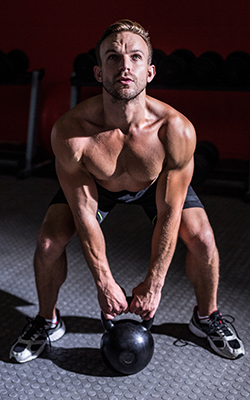
Functional movement exercises also decrease our risk for injury. Because functional movements engages our core and other stabilizing muscle groups, these support structures are strengthened along with the targeted muscle groups. Since we have developed a strong support system, we reduce the risk of injury.
Aesthetically, functional movement training tends to lead to a leaner with greater overall muscle tone. If you want to improve your strength, but don’t want to create an overly muscled appearance, then this type of training will better meet your goals.
Finally, with a focus on improving mobility, balance, agility, and overall strength, functional movement programs lead to reduce risk of falling and improved quality of life. This makes this type of exercise incredibly valuable to elderly individuals. When you have the strength to perform everyday activities, like standing from a chair, with ease, you can experience a high quality of life for most of your life.
How do Muscle-Specific Exercises Differ from Functional Movements?
Both functional movement and muscle-specific movement exercises provide great fitness results. But, they deliver different kinds of results. Muscle-specific exercises will be the exercise of choice for building muscle mass in a specific location, as opposed to overall strength and stability.
Muscle-specific exercises, as the name implies, target specific muscles. Typically, these exercises are designed to isolate a particular muscle and force it to bear almost 100% of the resistance burden. The design of these exercises specifically disengage all muscle groups not specifically targeted for improvement.
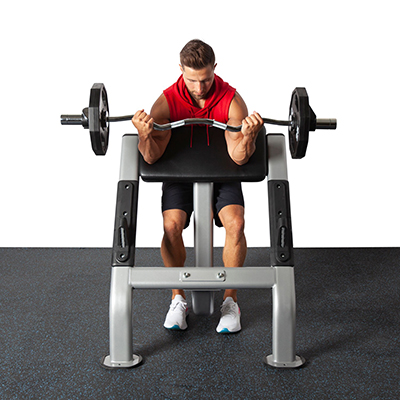
Consider the preacher curl. You sit on a stool with your upper body pressed against a pad, and your arms laid across a sloped bench. At this point, before any weight lifting begins, your entire body has been isolated from the exercise. Only your arms are involved. Resting your upper arms on the sloped surface, ensures that your shoulders and upper back will have limited involvement. The design of this movement focuses almost all of the work on your biceps.
This traditional style of muscle-specific training allows the athlete to target a particular muscle or group of muscles. If you aim to improve strength in a specific location or increase muscle mass for aesthetic reasons, this type of exercise excels.
But you need to have a unique exercise for each muscle you want to improve. This presents no problem if you merely focus on a few specific muscles. If you want to train your entire body, however, training sessions can get long and tedious as you move through an endless series of single-muscle exercises.
7 Essential Functional Movement Exercises
Below, we provide a simple exercise for each of the movement groups listed above. We will also show ways to adjust the difficulty up or down.
Push
The push-up is the quintessential pushing exercise. In the basic form, you begin with your hands and feet on the floor, arms fully extended. Your shoulders, hips, knees, and ankles should form a straight line. This upper position is also called a plank. Then you slowly lower your body, by bending your elbows, until your abdomen is just an inch or two off the floor. Push yourself back to the plank position.
Make it easier: To reduce the difficulty of this movement, simply elevate your hand placement relative to your feet. Push up with your hands on the edge of a table or desk while your feet or on the ground. You can even stand a few steps away from a wall and push off from there.
Make it harder: If elevating your hands makes this movement simpler, then elevating your feet on a chair or stability ball will make it more difficult.
Resistance Band Option: Instead of doing a push up, you can stand (or sit) with a resistance band anchored behind you. Push the resistance forward, away from you.
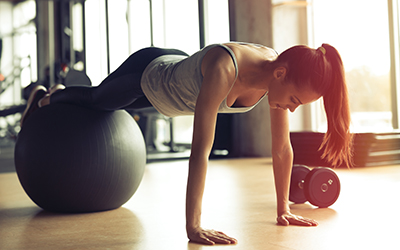
Pull
The classic pull-up may be what first comes to mind when we think of pulling exercises. But we think that the pull-up is exceedingly difficult for most people. Further, the pull-up movement doesn’t really replicate very many day-to-day activities.
Rather, you should focus on an inverted row. In this activity, you hang from a bar, tabled edge, or other horizontal surface, with your arms straight out in front of you. You can also use a suspension system, if you have one. Pull yourself up so that your chest just touches your gripping surface. Then lower yourself back down.
Make it easier: Instead of having your legs out straight, with your heels on the floor, bend your knees and place your feet flat on the floor. If that’s not enough, elevate the surface your pulling against. You can always pull yourself toward a towel rack or door handle.
Make it harder: Elevate your feet. If that’s not enough, add more resistance by incorporating resistance bands or free weights.
Resistance Band Option: Stand (or sit) with a resistance band anchored in front of you. Pull the resistance toward you.
Hinge
No exercise develops the Hinge movement better than the deadlift. Learn to do this exercise safely and you will improve just about every muscle in your body. Once you’ve mastered the basic form, you can perform this exercise with just about any object, assuming the weight is appropriate. This makes it a far more versatile exercise than it might first appear.
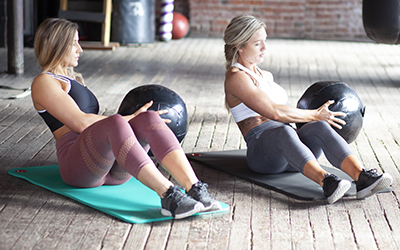
Rotate
Stand with your feet shoulder width apart. Holding a weighted object, like a medicine ball, against your chest, rotate your upper body all the way to the left, then all the way to the right, then back to center and repeat. On each set, alter the direction you begin with.
Make it easier: Reduce or eliminate the weight.
Make it harder: Increase the weight. Or hold the weight farther from your body.
Resistance Band Option: Stand with the resistance band anchored to one side. Holding the other end of the band, with the band taut, rotate your body away from the anchor point.
Squat
The squat is a simple movement pattern that offers a great benefit for the entire lower body. The basic form can be tricky to get right, but once you master it, you can perform this exercise anywhere and with a number of variations to alter difficulty.
Make it easier: Add support by putting your back against the wall and squatting down or by holding onto a band or fixed surface in front of you. You can also decrease the range of motion by reducing how far down you squat.
Make it harder: Hold the squat at the bottom of your motion. Add weights or hold onto a resistance band. If the basic squat is just too easy, then move onto the one-legged squat.
Resistance Band Option: If the squat is too difficult for any reason, you can try a resistance band leg press. Lay your back. Place the middle of a resistance band across your feet. Hold onto the ends of the band and push the middle away from you.

Lunge
The lunge will build the functional strength you use in walking and climbing stairs, among other activities. Begin by standing with your feet hip width apart. Take a large step forward. Bend the knee of your foward leg until your back knee just touches the floor. Push back up, and bring your feet back together. Repeat with the other leg.
Make it easier: Hold onto something as your perform this exercise to add stability or reduce resistance. As with the squat, you can also limit the range of motion to reduce difficulty.
Make it harder: Hold the lunge at the bottom of the motion. Add weights. Increase the speed or go from a stationary lunge into a walking lunge.
Walk
Walking is one of the most fundamental movements we can perform. Incorporate walking into any functional movement training.
Make it easier: Use a treadmill or an elliptical trainer to adjust the difficulty down. You can also support your upper body with devices like a walker.
Make it harder: Incorporate resistance with things like a weighted vest. Add in hill climbs or stairs.
Functional movements lead to greater overall strength and a toned body. They also develop mobility and stability while engaged in basic strength training. For a better quality of life, and to make day-to-day activities easier, incorporate functional strength training into your daily routine.
